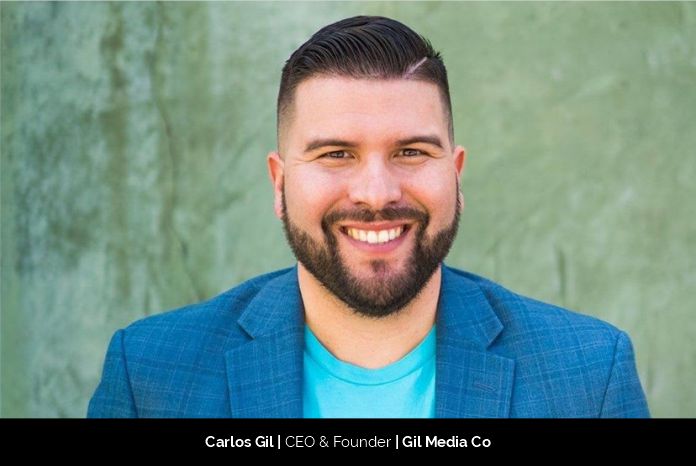How to Transition From a Corporate Job to Being an Entrepreneur
Beyond’s 10 Most Influential Entrepreneurs to Watch Out For in 2020

Starting a new business isn’t easy and it, of course, has
its share of ups and downs.
Some months are outstanding (financially), while others
aren’t.
Some months you’re in “pitch mode” to land new business and
others you’re delegating work to be performed, hiring new team members, firing
ones who aren’t working out and doing all the “things” that nobody on social
media will ever know, hear or see.
For a person who’s historically been a “corporate
intrapreneur” — otherwise referred to as someone who acts entrepreneurial yet
is paid a salary as an employee of a company — to have full autonomy to show up
and do your work on your terms while having the security blanket of a paycheck
can be rewarding.
However, the thought of not having that direct deposit hit
one’s bank account every 15th and 30th of the month can also be terrified to
the point of paralysis by analysis.
“How will I pay my rent?”
“How will I make my mortgage next month?”
“How will I sustain my lifestyle?”
“How will I be able to afford expensive dinners and
vacations?”
These are all questions that run through the minds of
corporate intrepreneurs — who have an entrepreneurial mindset — and lead them
to stay put more times than none.
It’s fear. It’s self-doubt. And, it’s real.
On Oct. 1, 2018, when my LinkedIn inbox became flooded with
“Congrats on your work anniversary!” messages, I took a moment to reflect on
what it took for me to walk away from a job that previously paid me over $150,000
per year.
For beginners, working a full-time job with a salary and
benefits isn’t a bad thing if you look at it from the perspective of you’re
being paid to learn new tasks and gain experience(s) which will you take with
you for the rest of your career. Experience which someday you can charge
large sums of money for.
Post-recession, circa 2012, I had to temporarily step away
from being self-employed and go work for corporations to rebuild my credit and
save up money, which had been nonexistent in the previous four-year period.
One of those jobs led me to start social media for
Winn-Dixie, one of the largest supermarket chains in the U.S.; the other was
working at LinkedIn, which relocated my family and me to San Francisco and
opened up a new world of opportunities which previously didn’t exist.
However, there comes the point when the paycheck, company
logo or work culture does not fulfill your needs, and you have to assess
whether your purpose and passion are more important than a paycheck.
If you’ve been contemplating ditching your 9-to-5 for self-employment, here are five things that will make your transition easier in the long-term:
1. Have a bigger objective in mind outside of your day job.
If you cannot answer that you love your job, then you’re in the wrong position. I often will meet gainfully employed professionals who dislike their boss or the company that they work for but feel that staying put outweighs the risk of going elsewhere — including on their own. If you have years of experience and don’t think that your value is recognized within your organization and are being held down, perhaps think about freelance consulting on the side to get a feel for what it’s like cutting your invoices, sending out proposals and doing work independently.
2. Start building an identity outside of your current job title.
As soon as you get the “itch” to work for yourself, make
your priority not what you will do but how you will do it. Begin with building
a professional identity outside of your job title or company logo. Many working
professionals are known as “James at X Company” or “Susan from Y Company”
because they’ve built their entire legacy around being an employee of a
high-profile organization — which is fine, but there comes the point where you
need to create your own identity independent of that employer.
Begin writing for publications in your industry as your name only — unaffiliated with your employer or current job title. Start speaking more at industry conferences. Participate in online groups on Facebook and LinkedIn to grow your identity and thought leadership but also to network.
3. Secretly network within your network.
For two years before I exited my corporate job to start my social media marketing agency Gil Media Co., I met privately with close colleagues to share with them my vision for “next steps,” either at industry conferences or by phone. While you don’t want to share your intentions publicly with the world just yet, what you do want is for your closest colleagues to act as informal advisors who may have a job for you (on a freelance basis) or can introduce you to someone that might be looking for your expertise. You’d be surprised at exactly how many major corporations are looking for consultants or freelancers with your skill set and expertise.
4. Don’t quit without paying clients.
Unless you’re fired or laid off from your job, do not quit
unless you have a paying client or two. Not having guaranteed income will bring
you stress which will make it harder for you to focus on the basics of getting
a business up and running. Therefore, it is critical that you have income
coming in from other sources before you become self-employed (by choice). You
should also have at least six months of salary in liquid cash saved up to help
you bridge the period between going out on your own to bringing in
consistent business.
In my case, a year before leaving my corporate job I picked up a client (ironically from a free speaking gig) which afforded me the ability to save cash that would eventually buy me a runway.
5. Document the process.
Sharing your story is a competitive advantage. Why? Because
it’s your story. Strangers will be more inclined to help you when they see
someone who’s sharing their vulnerabilities. As I share in the video and short
documentary above titled “Chasing Opportunity,” a layoff in the financial
services industry in 2008 led me to discover social media as a gateway to
rebuilding and rebranding myself, which led me down a new career path to where
I find myself today. While my story is unique to me, it’s also real and
relatable.
As you’re growing a new business document the process of growth — and sometimes failure — through daily stories on Instagram or Facebook. Leverage mediums like YouTube and LinkedIn, too, to amplify awareness around whatever your “hustle” is. You will find that there’s a world of opportunity waiting for you outside of your city or state if you see it. However, sharing who you are, what you do and what you want to accomplish is critical to unlocking it.












